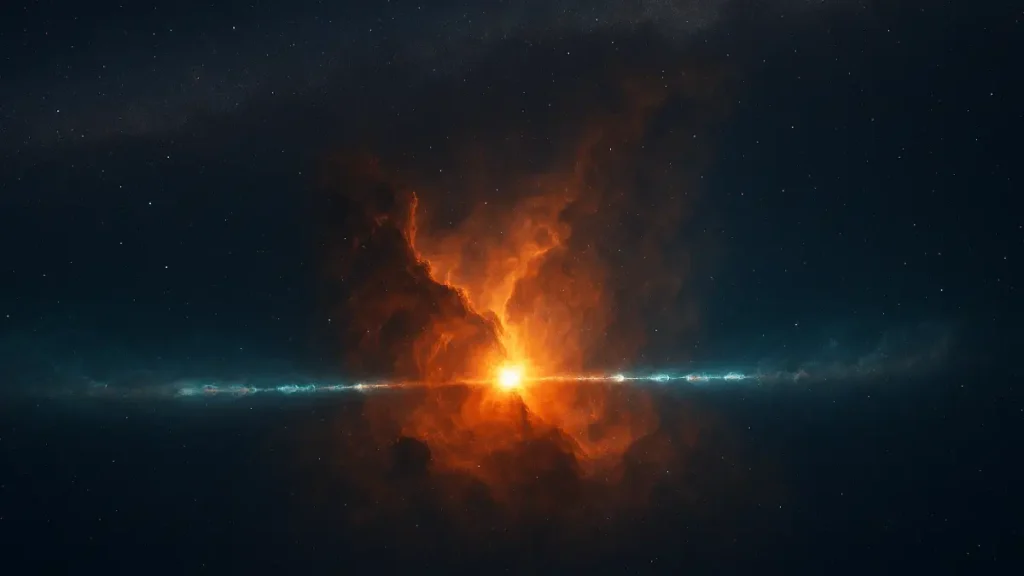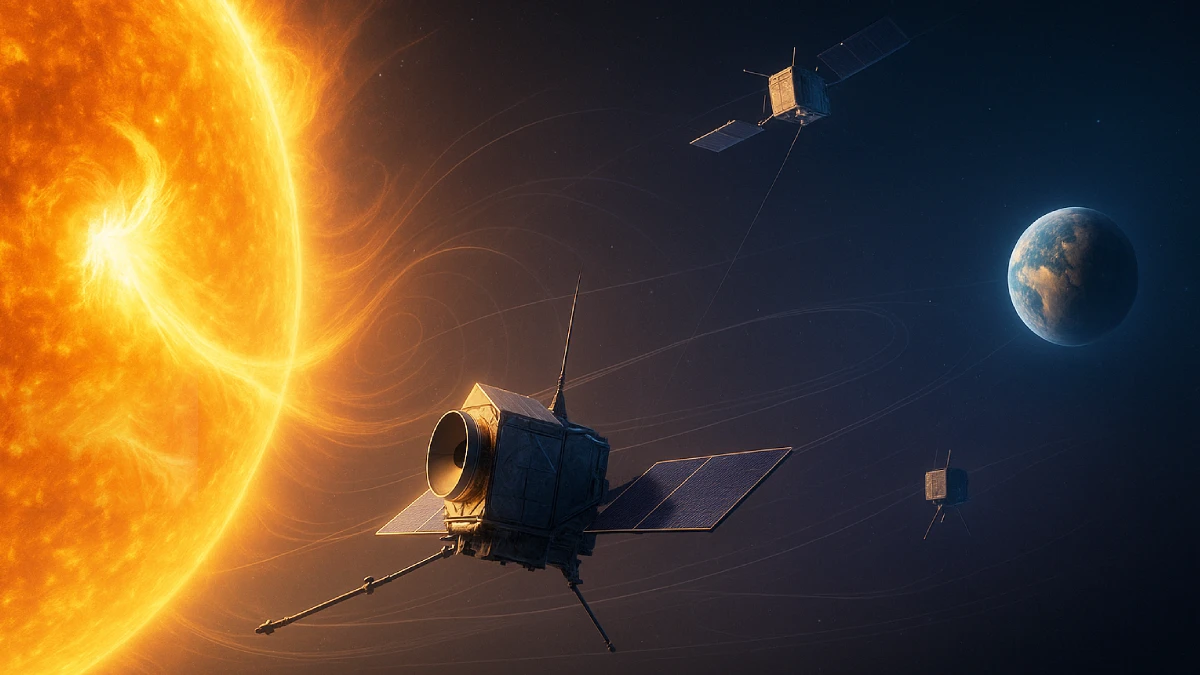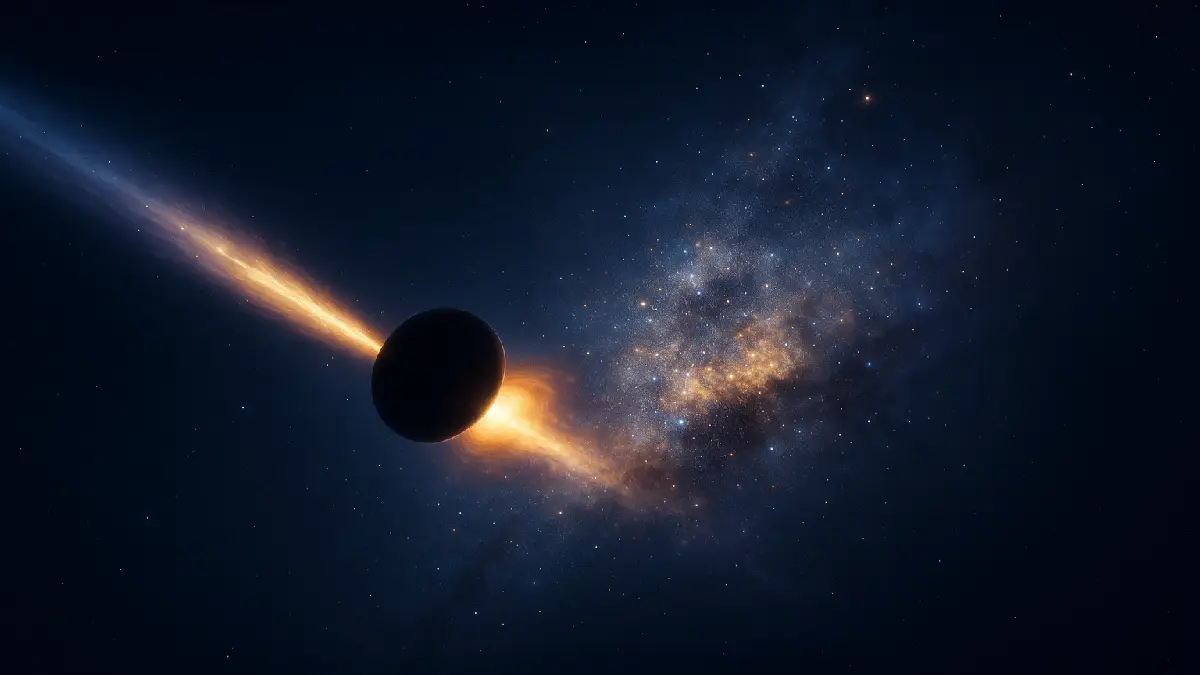A young, still-forming massive star has launched twin, knife-straight jets spanning roughly 8 light-years on the Milky Way’s outskirts—an eruption so vast it dwarfs the Sun–Alpha Centauri distance. Beyond spectacle, this infrared view offers a forensic record of how giant stars assemble and a rare real-world test of competing theories of massive star birth.

What Webb Actually Saw
Webb’s near-infrared view reveals opposing, highly collimated jets from a protostar embedded in the Sharpless 2-284 nebula, about 15,000 light-years away. The jets carve through surrounding dust and gas, showing knots and bow shocks along an 8-light-year structure—a scale extreme even among known protostellar outflows.
The Physics Under the Glow
Protostellar jets are byproducts of accretion: gas spirals inward through a disk while magnetic fields siphon angular momentum by launching twin beams along the rotation axis. The resolved knots and shocks act as a time series of episodic outbursts, preserving the disk’s orientation and hinting at the cadence of accretion bursts over thousands of years.
A Theory Stress Test: Core Accretion vs. Competitive Accretion
Astronomers have long debated whether massive stars grow via stable, disk-fed core accretion or chaotic competitive accretion in crowded clusters. The nearly perfect opposition and long, straight collimation suggest a steady disk orientation over the jet’s lifetime—evidence that bolsters core accretion models for massive stars rather than frequent reorientation expected in more chaotic scenarios.
Why the Milky Way’s Edge Matters
This system resides in the Galaxy’s outer disk, where star-forming environments are sparser and metallicities can differ from inner regions. Finding a massive, well-ordered jet here widens the conditions under which stable, disk-driven massive star formation can proceed, informing models of where and how giant stars ignite across galactic environments.
Instrumentation as Enabler
Infrared sensitivity and resolution allow the jet’s internal structure to be traced through dust, turning a photogenic outflow into quantitative constraints on energetics and timescales. Connecting morphology—knot spacing, bow shocks, collimation—with theory lets observers discriminate among models rather than merely catalog striking images.
System-of-Systems Ripples
- Star formation theory: Evidence for long-lived, stable disks around massive protostars supports unified accretion physics across mass scales.
- Galactic ecology: Massive stars sculpt the interstellar medium and future generations of stars; catching them in formation refines models of chemical and dynamical evolution in the outer disk.
- Observational strategy: The discovery argues for wider infrared surveys of the Galaxy’s outskirts, paired with millimeter follow-ups, to census massive protostars and outflows across environments.
- Science communication: The “double-bladed lightsaber” analogy conveys collimation, symmetry, and energy flow in a single mental image without sacrificing accuracy.
What If This Is Common?
If similar giant, well-collimated jets are widespread in outer-disk regions, core accretion may dominate massive star formation across a broader range of densities and metallicities than assumed. That would sharpen predictions for the initial mass function and feedback loops in galaxy evolution, especially in low-density outskirts akin to early-universe conditions. A larger sample could tie jet length, knot spacing, and shock brightness to accretion rate and magnetic field strength, turning visuals into empirical scaling laws.
How to Read the Image Like a Researcher
- Collimation: Straight beams imply strong magnetic confinement and a stable rotation axis over long timescales.
- Symmetry: Nearly 180-degree opposition points to a steady disk orientation, a core-accretion hallmark.
- Shock features: Chains of knots and bow shocks map episodic ejection and jet–cloud interactions, hinting at burst timing.
- Environment: The outer-disk setting supplies boundary conditions—lower density, different metallicity—to test the universality of formation physics.
The Big Picture
An 8-light-year protostellar jet at the Milky Way’s edge is a living laboratory showing that massive stars can grow with disk stability and magnetic discipline, even in a quiet galactic frontier. With Webb’s clarity, astronomy is shifting from spectacular images to discriminating measurements that reshape how and where the universe’s biggest stellar engines come to life.




